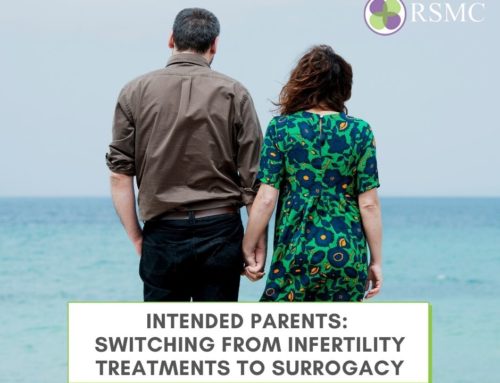A Light at the End of the Tunnel: Time for a Surrogate
This story originally appeared on parenting.com

So even though it was a financial struggle, we came up with the more than $10,000 it would cost and hoped that finally, Tasha would carry a baby to term. He fertilized 30 of her eggs with my sperm and implanted Tasha with three embryos.
She made it to about ten weeks.
The next time we saw Dr. Austin, he told us we should try a surrogate.
RAQUEL: In the summer of 2005, Tasha and John came over and told us about that last miscarriage. We all cried. Then John told us what Dr. Austin had said about having a surrogate, and we didn’t even have to think about it — we said we’d do it.
Dr. Austin started me on hormone therapy and implanted me with two of Tasha and John’s embryos that had been frozen from their first IVF attempt.
JOHN: Dr. Austin also talked to us about implanting Tasha one last time. Tasha wasn’t very enthusiastic about that — she was convinced she already knew what the outcome would be. But he felt that if Raquel got pregnant and Tasha hadn’t tried, it would have been harder to watch Raquel have the baby. We agreed, and the doctor implanted Tasha with five frozen embryos.
One thing Dr. Austin kept telling us was how great our surrogates were: Jeff was extremely supportive — he didn’t mind that his wife was carrying Tasha’s baby — and neither Jeff nor Raquel had any ulterior motives. When Dr. Austin asked them why they were doing this, they told him, “It’s simple. These people are our friends, and they need our help.”
TASHA: About two weeks after Raquel and I were implanted, she called me and asked, “If I took a pregnancy test, would you want to know the results?” I said yes. And that’s when she yelled, “I’m pregnant!” I started crying. I called John as soon as I got off the phone with Raquel — we were thrilled.
I took a blood test and discovered I was pregnant, too. A few weeks later, Raquel and I met at Dr. Austin’s office for our first sonograms. He told us some news neither of us was expecting: We were both carrying twins!
I was ecstatic about Raquel. We had a good feeling that she’d be able to carry the babies to term. But I wouldn’t let myself get too excited about the babies I was carrying.
Then I hit the two-month mark, then four months. When I was six months along, I started having weekly doctor appointments, and things were going really well. That’s when John and I were both like, “Oh my gosh, we’re going to have four babies!”
Dr. Austin said it’s impossible to say why I was able to keep these babies — maybe because I was under much less stress this time around. Once I found out Raquel was pregnant, I put all my energy and heart into making sure she would carry the babies to term — and I knew that whatever happened with my pregnancy, I’d still become a mom.
RAQUEL: Everyone in my family was very excited about my pregnancy — I never got a negative reaction about it, not from friends, or Jeff, or the kids. Plus, Tasha and I had so much fun being pregnant together. We had all of our appointments with Dr. Austin at the same time, so we really went through everything together.
We also compared notes on morning sickness, aching feet, and food cravings. One day I called Tasha from the market. I was buying strawberries because I’d been craving them. When I told her that, she laughed — she was sitting on the couch eating strawberries and watching Oprah. Stuff like that happened a lot! We knew exactly what the other was going through — and we turned to each other for advice and support all the time.
This article was originally published on: http://www.parenting.com/article/2-moms-4-miracles-a-story-of-surrogacy























